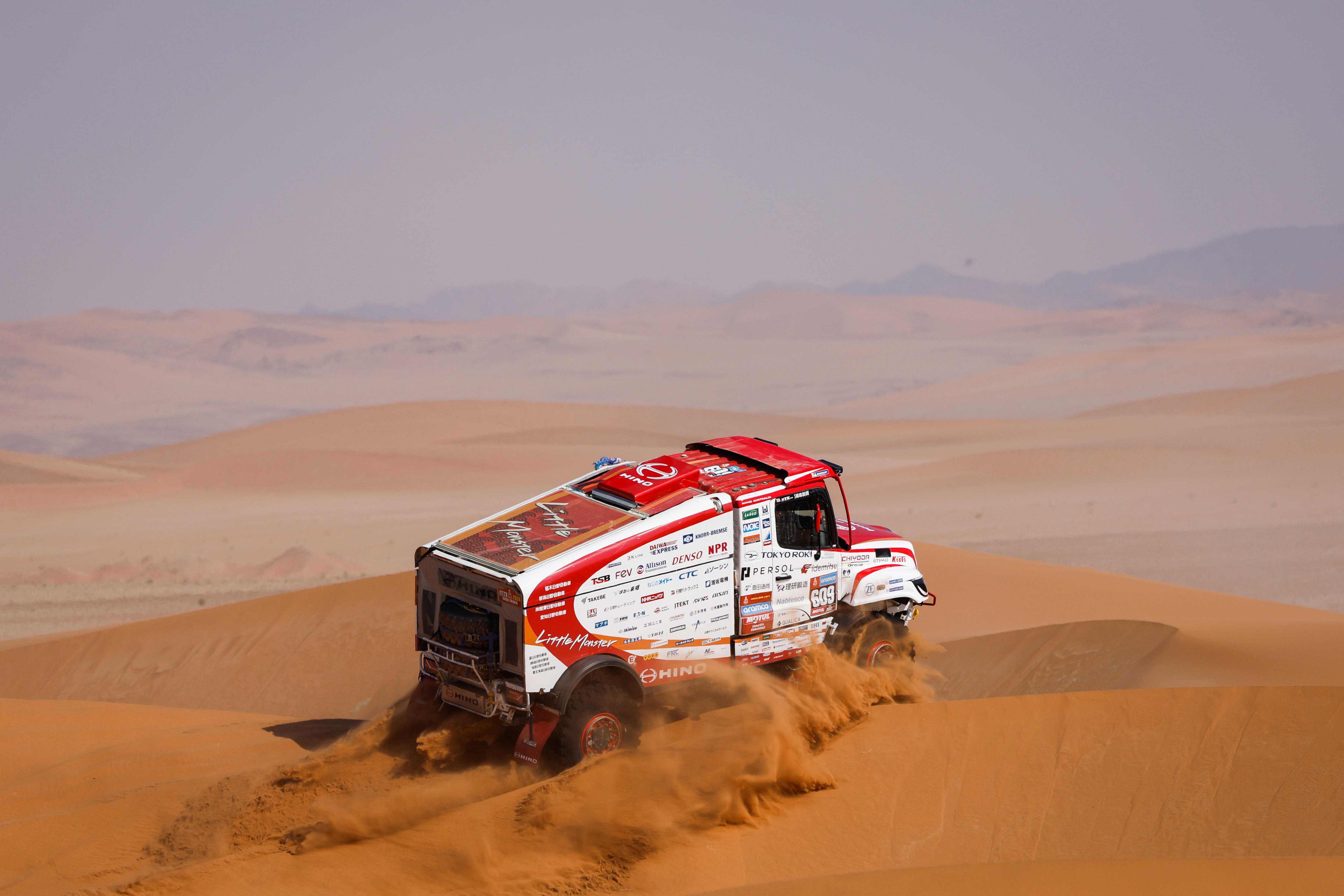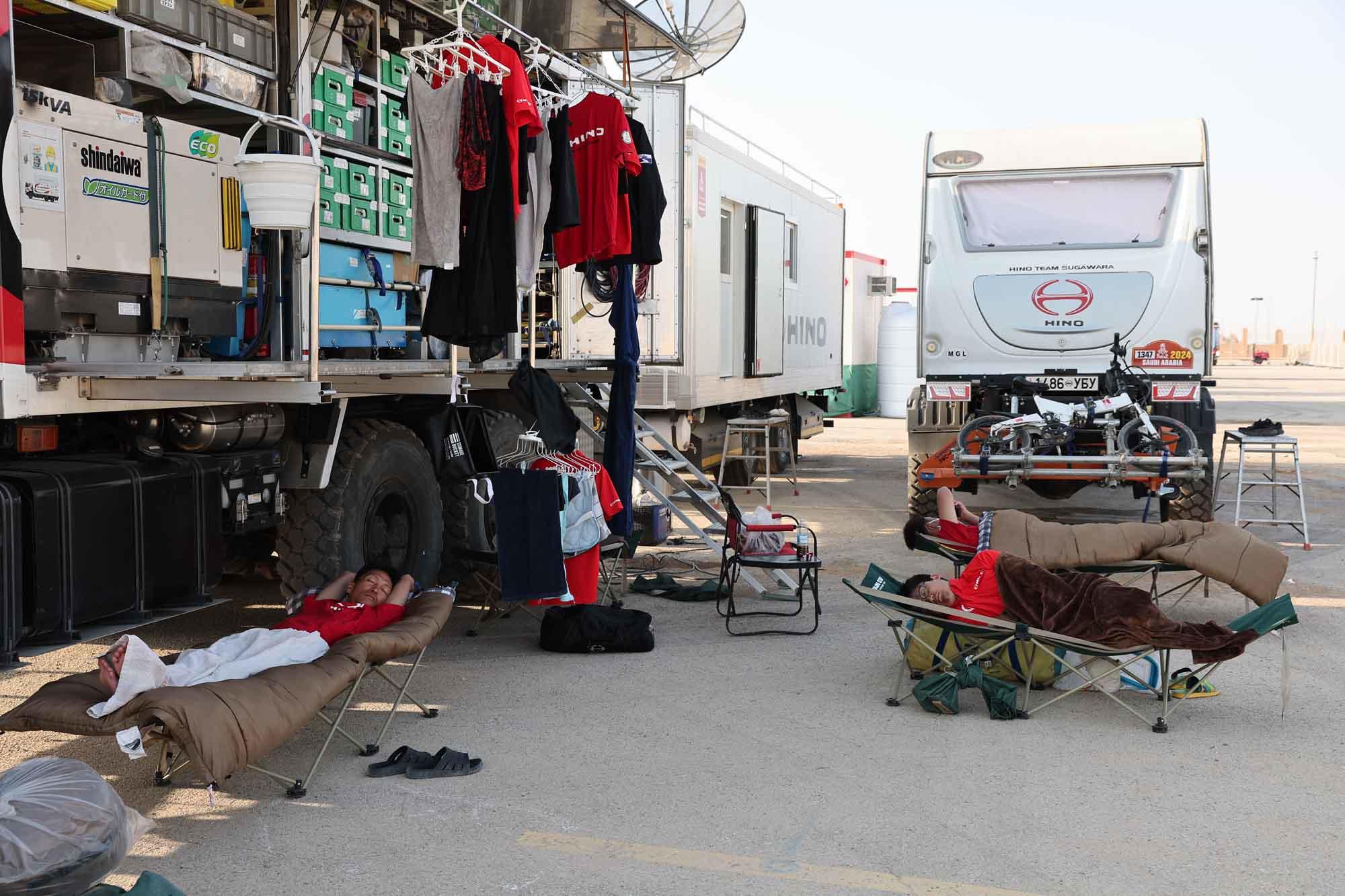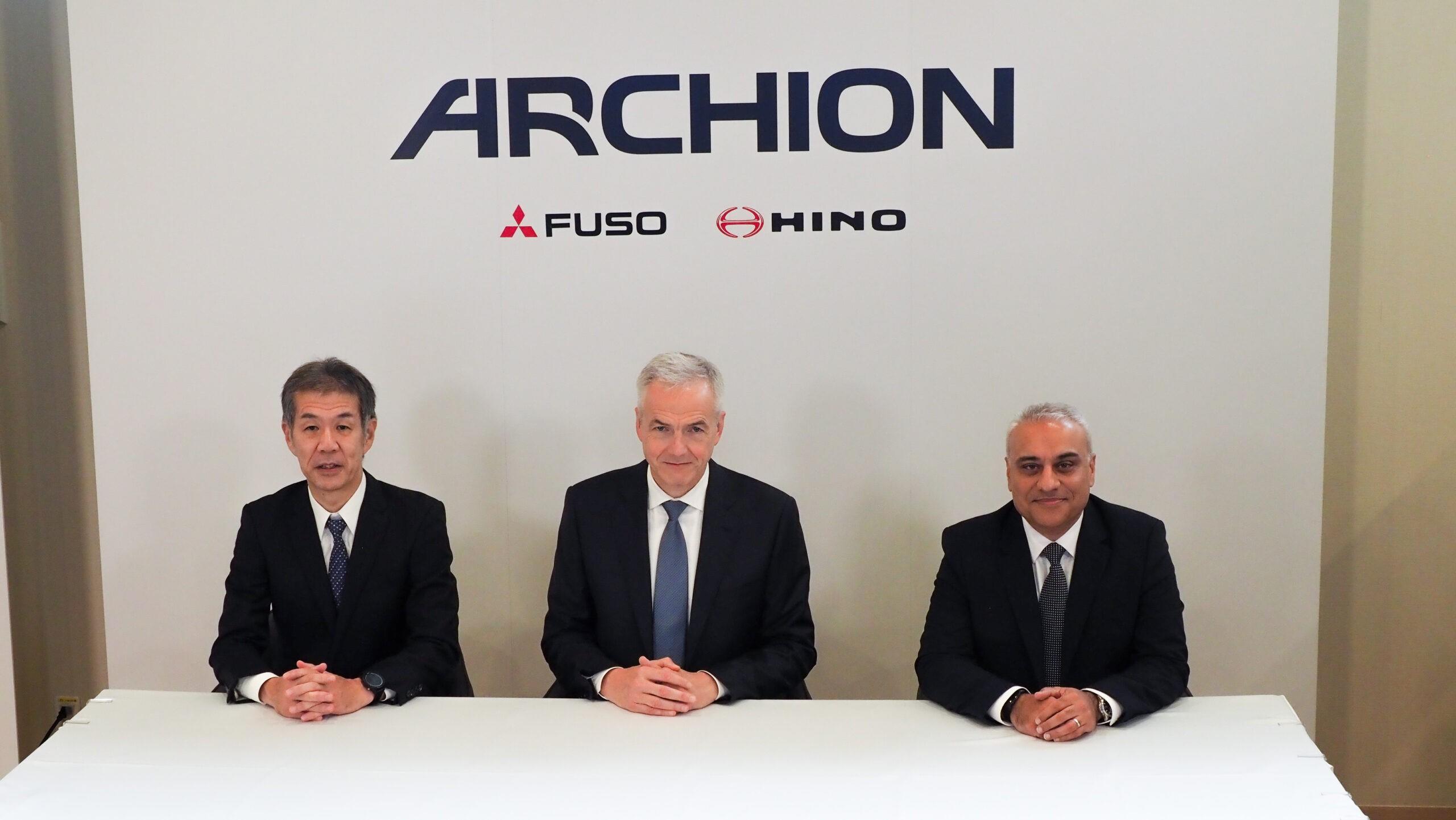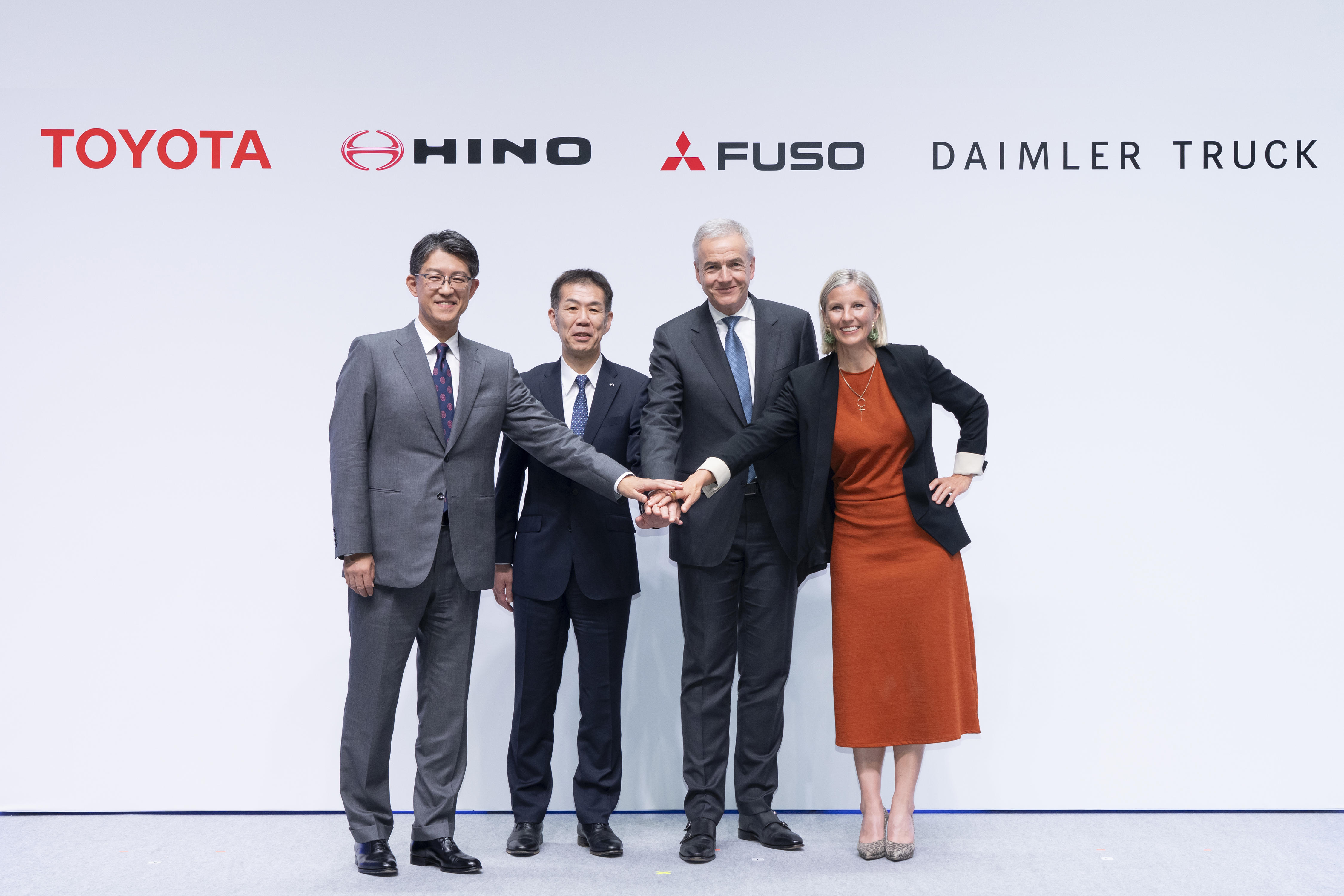The team shows its full potential in the most difficult stage, "48h Chrono". Make up for the delay caused by fuel system trouble and cross the finish line.
Jan 13, 2024
On January 11, the final stage of the first half of the Dakar Rally 2024, "48h Chrono" was held, a two-day 547km race starting from Shubaytah in southern Saudi Arabia.
The stage took place in the eastern end of the Rub' al Khali Desert, known as the "Empty Quarter" which stretches across the southern part of the country.This long stage with large dunes of soft sand was the most difficult part of this year's race.
It also attracted attention as a new attempt in which participants were assigned to seven points on the course depending on their progress at 4 p.m.and had to stay overnight at simple bivouacs.
HINO TEAM SUGAWARA's HINO 600 series, which specializes in crossing difficult sand dunes, showed off its high potential on this stage.
On the first day, they placed 6th in the trucks category, and on the second day they lost approximately 5 hours due to a fuel system problem, but once the problem was resolved they picked up their pace and crossed the finish line.
The route was to first head east from the Shubaytah bivouac, then travel along a 110km liaison to the start and finish points of the SS.The SS, set near the border with the UAE (United Arab Emirates) in the north and Oman in the east, was a loop-shaped course with a horizontal figure 8, and the finish line was at the same point as the start point.
The course was made up of sand dunes, and there were many sections where they had to cross over high and difficult sand hills, and shots (dry salt lakes) appeared many times between the dunes.
The same point between previous marathon stages and the 48h Chrono is that vehicle maintenance and parts cannot be supplied during the stage. The difference is that previous marathons run two stages over two days, whereas the 48h Chrono runs one stage.Therefore, seven "break zones" (simple bivouacs) are set up along the course from the 193km point to the 523km point.
After 4:30 p.m. at the closest point and 3:30 p.m. at the farthest point, participants who reach each break zone will be stopped there and spend the night there.
The next morning, they restart at 6:30 a.m. in the order of arrival on the first day and aim for the goal.
The HINO 600 Series piloted by Teruhito Sugawara, Hirokazu Somemiya, and Yuji Mochizuki started the SS at 10:21 a.m. on January 11 in 7th position in the trucks category.
They cleared the difficult sand dunes at a steady pace and passed the first break zone at the 193km mark just after 2pm in 6th place.
After that, there were no major mistakes or troubles, and the team reached the 294km point, where the second break zone was set, in 6th place, and the first day's competition ended smoothly.
However, an inspection after the finish line on the first day revealed that the fuel return tube was damaged, and although it was immediately repaired, a significant amount of fuel had already been lost.The second day started with fuel-efficient driving, but they ran out of gas and stopped 30km before the 398km point, which was the refueling point.
This was a terrible loss of time.
Since the vehicle was tilted, they were able to pump the remaining fuel into the plastic tank, restart the engine, and get going again.
After refueling at the refueling point, the truck regained its strength, but with about 100km to go from the finish line, the sun set and they were forced to slow down.
It was around 8pm when they arrived at the SS finish line.
After the team returned to the bivouac in Shubaytah via liaison, they had to immediately proceed to the next bivouac, Riyadh, 853km away, without any time to rest.
They are scheduled to arrive in the early hours of January 13.This day will be the only rest day during the competition, and the mechanics, who will arrive from Shubaytah before them will carry out careful inspections and maintenance.
Teruhito Sugawara:
It was a very difficult sand dunes stage, but it was our specialty, so we were able to drive well.
That's why the fuel leak problem was such a disappointment.
Hirokazu Somemiya:
Crossing the sand dunes went very well.
I had no problems with navigation, and although we missed one waypoint, we were able to pass everything else.
Yuji Mochizuki:
I think that one of the causes of the gas shortage was the reduction in fuel efficiency due to heavy use of high rotation in the low range of the sub transmission, but the biggest cause was that the fuel return pipe was damaged and a considerable amount of fuel leaked out.
Running on the sand dunes for two days was extremely tiring.






